Lire le communiqué de presse de l’Université de Strasbourg
Contact scientifique :
Benjamin Bacq-Labreuil
benjamin.bacq-labreuil@ipcms.unistra.fr
Contact scientifique :
Benjamin Bacq-Labreuil
benjamin.bacq-labreuil@ipcms.unistra.fr
As the miniaturization of traditional silicon-based electronics nears its physical limits, the semiconductor industry faces mounting challenges: energy inefficiency, data bottlenecks in von Neumann architectures, and inflexible hardware for AI-driven tasks. Emerging applications like autonomous systems, IoT, and real-time learning demand a radical shift in how computation and memory are integrated at the nanoscale.
Developed by an international consortium of leading institutions including Université de Strasbourg, Institute of Nanotechnoly of Lyon, Université Paris-Saclay, and the National Institute for Materials Science (Japan), we are excited to present a new achievement in nanoelectronics: The Van der Waals Inverted Floating Gate Field-Effect Transistor (IFGFET) — a novel device topology that bridges logic, memory, and neuromorphic computing in a single architecture.
This innovation leverages Van-der-Waals heterostructures, combining ReS₂ semiconductors with a top polymorphic floating gate and a bottom control gate. This topology makes it possible to access the floating gate and leads to a better electrostatic control of the channel compared to the traditional topologies.
In addition, this technology provides game changing features such as:
This reconfigurable device may unlock new frontiers in in-memory computing, neuromorphic and spiking neural network, and secure AI hardware.
👉 Read the full article in ACS Nano: Link to article
Contact : dayen@unistra.fr
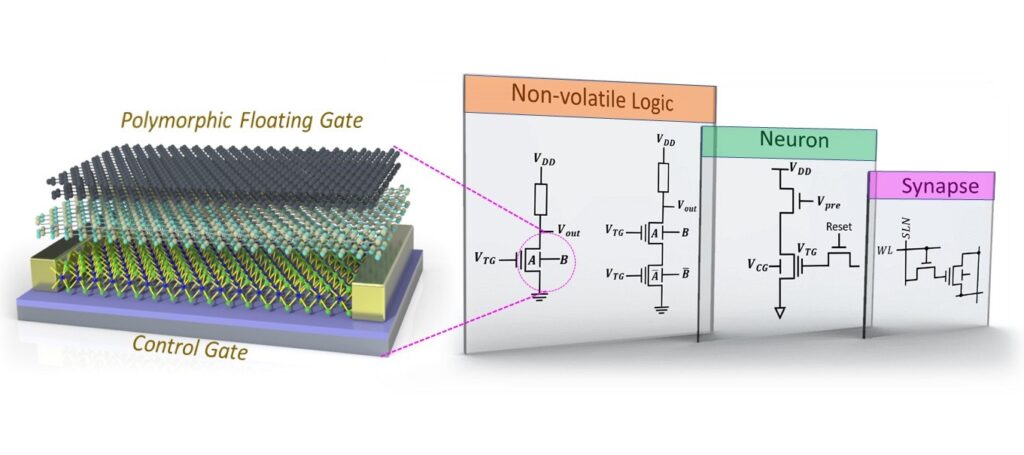
Référence
Semiconducting Overoxidized Polypyrrole Nano-Particles for Photocatalytic Water Splitting
Xiaojiao Yuan, Girlie Eunice Lopez, Viet-Dung Duong, Samy Remita, Diana Dragoe, Dris Ihiawakrim, Ovidiu Ersen, Yannick Dappe, Winfried Leibl, Hynd Remita & Ally Aukauloo
Small 2025
https://doi.org/10.1002/smll.202407364
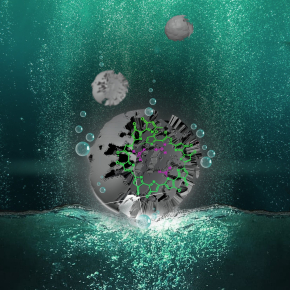
© Hynd Remita
Réference : Hoshang Sahib, Aravind Raji, Francesco Rosa, Giacomo Merzoni, Giacomo Ghiringhelli, Marco Salluzzo, Alexandre Gloter, Nathalie Viart, Daniele Preziosi
Superconductivity in PrNiO2 infinite-layer nickelates
Advanced Materials 2025
https://doi.org/10.1002/adma.202416187
Contact : Daniele Preziosi (Chercheur à l’Institut de physique et de chimie des matériaux de Strasbourg (CNRS/Université de Strasbourg) daniele.preziosi@ipcms.unistra.fr
Explications avec Paul-Antoine Hervieux, membre de la collaboration et enseignant-chercheur à l’Institut de physique et chimie des matériaux de Strasbourg (IPCMS – CNRS/Unistra).
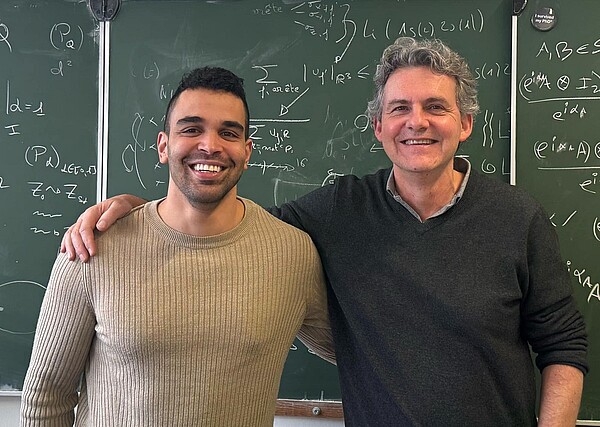
Paul-Antoine Hervieux et un de ses doctorants, Adrien Andoche, qui a soutenu sa thèse en décembre 2024. ©DR
“CORELMAG” fait partie des projets ANR 2019 : Nanocomposites innovants libérant des facteurs biologiques par hyperthermie magnétique en tant que composants de matrices intelligentes pour l’ingénierie tissulaire.
Coordinateur du projet : Damien MERTZ (IPCMS – DCMI)
Vous pouvez lire ou télécharger la BD sur cette page : https://www.alsace.cnrs.fr/fr/corelmag
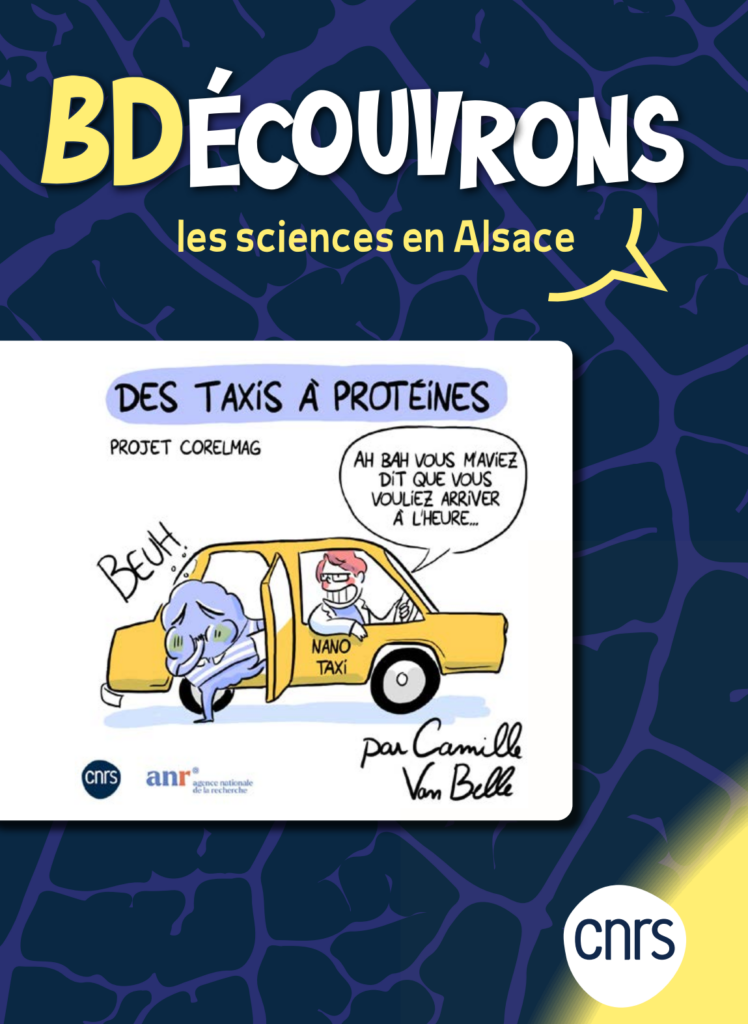
Initiative portée par le service communication Alsace du CNRS.
Programme d’accompagnement à la médiation scientifique : Sophie Le Ray
Planche de bande-dessinée réalisée par Camille Van Belle
Référence
Divergence of catalytic systems in the zinc-catalysed alkylation of benzaldehyde mediated by chiral proline-based ligands.
Thibault Thierry, Yannick Geiger & Stéphane Bellemin-Laponnaz
Nature Synthesis 2024
DOI https://doi.org/10.1038/s44160-024-00491-y
Contact : Stéphane Bellemin-Laponnaz
The article recently published in Nature Nanotechnology (Doi : 10.1038/s41565-024-01622-4): Submolecular-scale control of phototautomerization / Anna Roslawska, Katharina Kaiser, Michelangelo Romeo, Eloïse Devaux, Fabrice Scheurer, Stéphane Berciaud, Tomas Neuman and Guillaume Schull, is the subject of a news item on the CNRS Physique website.
https://www.inp.cnrs.fr/fr/cnrsinfo/vers-une-photochimie-lechelle-sub-moleculaire
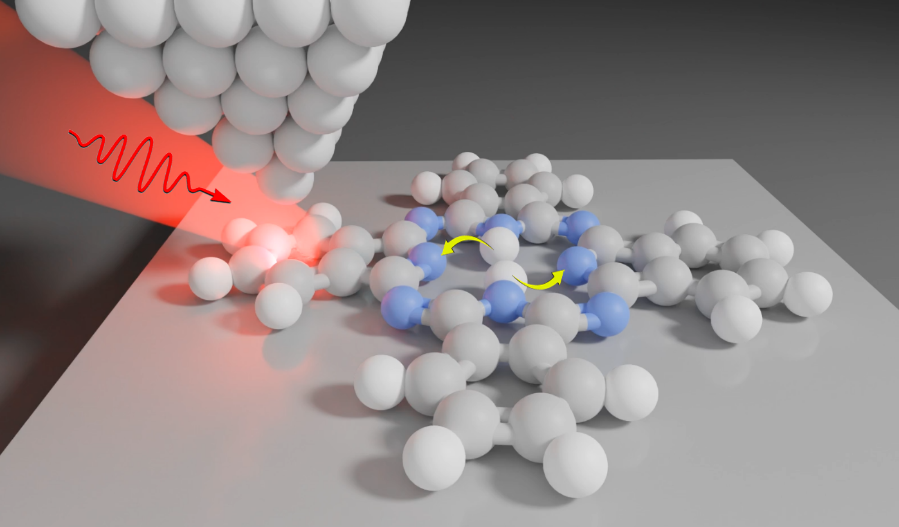
Figure : Contrôle local de la réaction de photo-tautomérisation de la phtalocyanine. La pointe métallique est visible dans la partie supérieure gauche de la figure © A. Rosławska et G. Schull.
Lire l’article complet sur le site CNRS – Nucléaire & particules
L’équipe DON-Dyno fait partie de cette collaboration (Gbar) depuis sa création.
Lien vers la publication associée à cet événement, qui vient d’être acceptée : http://arxiv.org/abs/2306.15801
An international consortium (University of Strasbourg, University of Luxembourg, NIMS Japan, Ecole Centrale Lyon, C2N Saclay) led by IPCMS (team of Jean-François Dayen, DMONS), established the concept for a new generation of reconfigurable ferroelectronic logic circuits.
These devices, referred as Re-FeFET, allow for encoding and manipulating the information in a single operating unit, circumventing the famous ”Memory Wall” limitation of modern CMOS technology. By making use of the switchable polarization state of two ferroelectric gates, the electrical potential landscape within a semiconductor channel can be permanently and reconfigurably modified. Depending on the ferroelectric state encoded, the ferroelectric logic circuits can function as six alternative logic gates, while CMOS circuit are limited to a single function. Last but not least, the device can operate as a photodiode and generate photovoltaic energy. These findings rethink circuit topology and memory-logic interaction, opening up new research directions in the area of frugal computational enhancement.
Reference :
Reconfigurable Multifunctional van der Waals Ferroelectric Devices and Logic Circuits
Ankita Ram, Krishna Maity, Cédric Marchand, Aymen Mahmoudi, Aseem Rajan Kshirsagar, Mohamed Soliman, Takashi Taniguchi, Kenji Watanabe, Bernard Doudin, Abdelkarim Ouerghi, Sven Reichardt, Ian O’Connor and Jean-Francois Dayen.
ACS Nano 2023, 10.1021/acsnano.3c07952. Link.

Contact : Jean-Francois Dayen
Reconfigurable Multifunctional van der Waals Ferroelectric Devices and Logic Circuits, Ankita Ram, Krishna Maity, Cédric Marchand, Aymen Mahmoudi, Aseem Rajan Kshirsagar, Mohamed Soliman, Takashi Taniguchi, Kenji Watanabe, Bernard Doudin, Abdelkarim Ouerghi, Sven Reichardt, Ian O’Connor et Jean-Francois Dayen, ACS Nano, publié le 21 octobre 2023.
Doi : 10.1021/acsnano.3c07952
Archives ouvertes : HAL